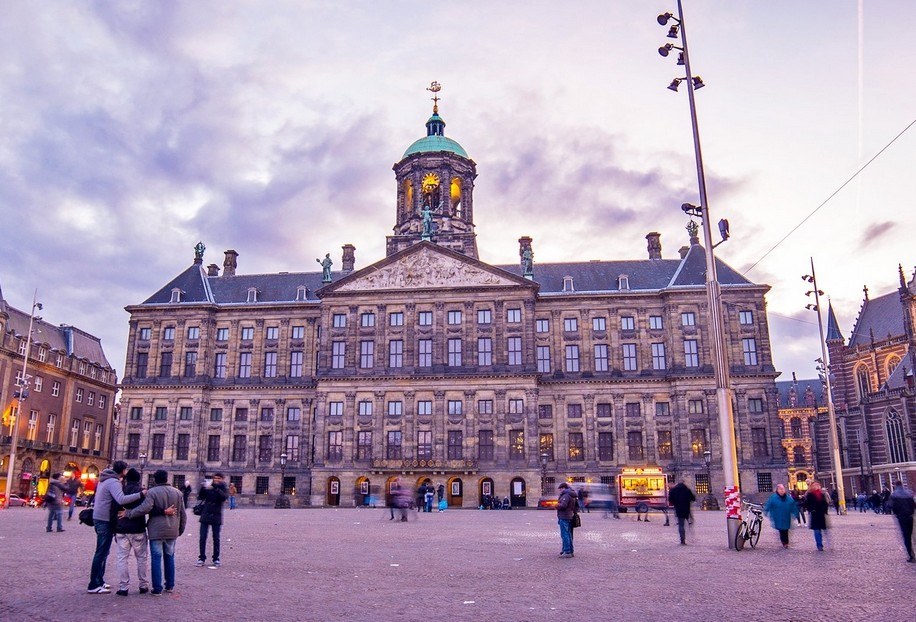
11 Things You Need to Know About Amsterdam
#amsterdam Amsterdam attracts tourists from all corners of the planet due to its liberal culture and unconventional attractions. As one of the most liberal European cities, it offers a wide selection of accommodation, bars and festivals open to the LGTB collective, as well as a thriving cannabis culture with over 200 specialty cafes in the city centre.
Another of Amsterdam's main attractions is the canal ring, which has more than 150 canals and the nothingness of 1281 bridges. The best way to tour this area is by bike, but don't forget to always look left and right before crossing the streets, as some cyclists can go pretty fast. Unbelievable though, none of these data is listed with the eleven things you may not know about Amsterdam, the capital of Holland.
1.- Amsterdam is supported on millions of piles
Most of Amsterdam's buildings are built on wooden stilts with a length of 15 to 20 meters. Typical houses in the city center have about 10 piles in their foundations, while the Royal Palace sits on more than 13,500.
2.- And yet it sinks hopelessly
An interesting aspect of Amsterdam is that the city is below sea level, but it has managed to stay afloat thanks to its iconic canal system and the wooden piles that base its constructions. Unfortunately, the shady terrain on which it sits is unstable and, over the years, has caused numerous cracks in stairs and the inclination of some buildings.
3.- The city has more channels than Venice
The comparison between Amsterdam's seventeenth century canals with those of Venice is common. So much that the Dutch capital is known as the 'Venice of the North'. In fact, Amsterdam is home to 165 canals that add up to 50 kilometres in total length. His Italian counterpart has approximately 150 channels.
4.- In Amsterdam, there are more bicycles than people
Amsterdam has been working its reputation as a bicycle-friendly city for a long time and there is no surprise to hear the hectic bells of cyclists throughout the day. More than 60% of its inhabitants are biking every day and, on the road, the approximate proportion is three bicycles per car. Some cyclists can be very reckless, so be sure to walk around the right places when you stroll around the city.
5.- The first capital in the world to legalize gay marriage
It can be said to be one of the most liberal European cities, as Amsterdam (and the rest of the Netherlands) was the first to approve homosexual marriage in 2001. Since then, the city has been one of the most popular tourist destinations among the LGBT community. The Amsterdam Gay Pride Parade brings together parties, film screenings, sporting events, debates and the famous canal parade every year.
6.- Tobacco is prohibited in cafes and restaurants
Cannabis may be legal in Amsterdam, but tobacco has been banned in cafes and restaurants since 2008. Smoking is not allowed in trains, stations and waiting areas. If the authorities see you, the fine may exceed 25 EUR.
Location: Amsterdam (Netherlands)
7.- You can only buy or smoke cannabis in coffee shops
Although many tourists go to Amsterdam to participate in their cannabis culture, it is actually illegal to smoke joints in public. If you want to enjoy this substance, in the city you will find more than 200 coffee shops where you can do it privately and, most importantly, safely. Walking the streets full of cyclists and the canals under the influence of cannabis often entails unfortunate situations.
8.- In Amsterdam there are more than 2500 houseboats
There are more than 2500 houseboats in Amsterdam, many of which are offered as alternative accommodation to typical hotels. They are located along the canals and the Amstel river, and are built on cement pontoons. They have all the comforts of conventional houses, including bathrooms, kitchens and bedrooms.
9.- A houseboat for abandoned cats
Poezenboot often attracts numerous cat lovers because it is the only houseboat in the country (and perhaps in the world) for abandoned cats.
It is also known as Catboat (the cat boat) and is a floating sanctuary about 650 metres southwest of Amsterdam Central Station. It is open to the public and admission is free, but donations that result in the welfare of cats are accepted.
10.- The narrower a house is, the less taxes
Have you ever wondered why there are so many narrow houses in Amsterdam? In the 17th century, the amount of taxes to be paid by citizens was determined by the width of their homes. The result of this scarem has been a myriad of narrow houses, four or five floors. Amsterdam's narrowest house is located on Oude Hoogstraat 22 and measures only two meters wide by five deep. In Singel 7 you can admire the house with the narrowest façade, which is only one metre wide.
11.- The “ladies of the night" pay taxes
A stone's throw from Amsterdam Central Station, you'll come across the curious view of several rows of glazed rooms, inside which light women of clothing (and sometimes also men) are exhibited.. These ladies of the night offer their services completely legally, even pay their taxes as factory workers or office workers.
However, there are more things in the De Wallen neighborhood besides these unusual shop windows. The Erotic Museum exhibits some interesting exhibitions on human sexuality, and it is also worth visiting the public square and the Oude Kerk, or ancient church, for its 14th-century architecture.
- Comments (0)
- Recommended
- Milestones
Here are your recommended items...
Here are your milestones...


















I always tell people who come to Amsterdam: visit Haarlem: only half an hour away, and feel the difference. That's Holland, it feels different everywhere.
Interesante, y nutritivo para el saber